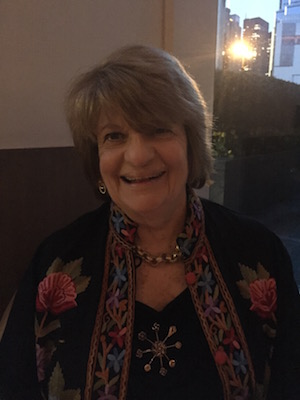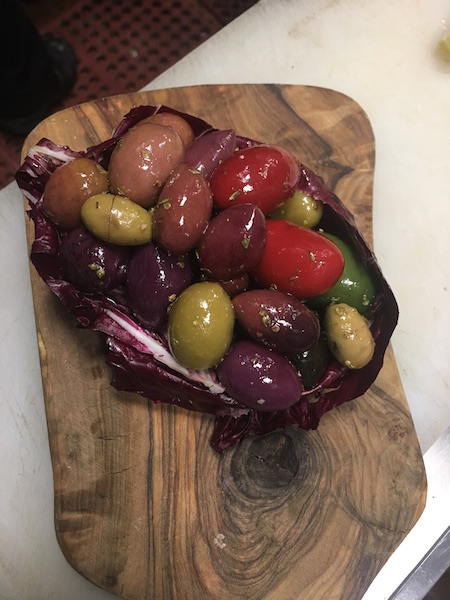The 2016 Guide to Holiday Tipping and Gifting
- Details
- Written by: Stacie M. Waldman
- Hits: 16498
 If you scroll through community Facebook groups during this time of year, you'll find post after post from people asking about tipping and gifting during the holidays. What is the average that people tip in our town for the holidays? To whom do people give tips, gifts or simple notes of gratitude? How the heck do you even tip sanitation workers when you leave for work before they come to take away your trash? There are no right or wrong answers, although policies do exist for some companies and government agencies regarding what their employees are allowed to accept.
If you scroll through community Facebook groups during this time of year, you'll find post after post from people asking about tipping and gifting during the holidays. What is the average that people tip in our town for the holidays? To whom do people give tips, gifts or simple notes of gratitude? How the heck do you even tip sanitation workers when you leave for work before they come to take away your trash? There are no right or wrong answers, although policies do exist for some companies and government agencies regarding what their employees are allowed to accept.
Part of the joy of the holiday season for many is the opportunity to say thank you to those who impact your life in a positive way or provide a service to you on a regular basis. Gifting and tipping is often done out of obligation but one should not feel obligated to give. If gift giving is not within your budget, a note expressing your genuine gratitude is enough and should be appreciated by even the "scroogiest". Even if it is within your budget, give some thought to whom you are tipping and why you are tipping them.". Have you ever tipped or given a gift to a receptionist at a doctor's office or the school nurse who goes out of her way to help you? Sometimes the people who expect something the least are the most gracious," said a Quaker Ridge resident.
The Emily Post etiquette website cautions, do not buy into the thought that if you don't tip you won't get good service for the coming year. If you think you've had bad service for this reason, you might want to...speak directly to a manager. The site also adds: Tipping is one of the most stressful and confusing aspects of etiquette today. It is a...way to show appreciation for a job well done; however, treating the person who has served you with respect is every bit as important.
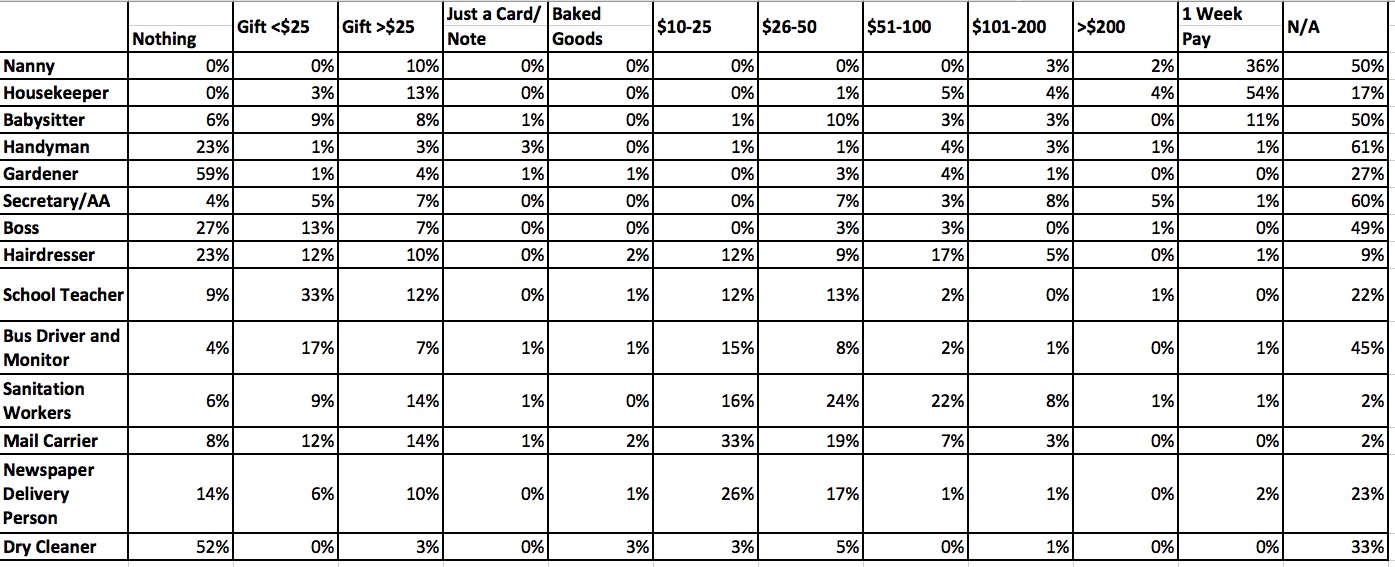
*Not included in the table here are day care providers as only 17% of respondents use this service. Mostly people gave a small gift or cash valued under $50. Dog walkers were seldom used (15% of respondents have dog walkers) but those who do give a small gift or a week's pay. About 23% of people have a valet and most give some small acknowledgement of thanks such as a note, small gift, between $10-$50. Personal trainers commonly receive cash gifts of $51-$100, but some people will give a full week's pay. Doctors were the least likely to receive any sort of holiday gift from their patients. Of the 74 respondents to this question, 6 give a small gift, 2 write notes, and a few give gifts valued between $25-$100.
Table Analysis
The Nanny: Most people give a nanny a gift equivalent to one week's pay or more (72%). Typical is one to two week's pay as a bonus. A working mom of three said, "My nanny makes my life so much easier for us and makes it possible for us to maintain our careers, so we give her a very generous 2.5 week bonus."
The Housekeeper: The majority of people have housekeepers (83%) and gift their housekeepers a week's pay as a holiday gift. Of those who have a housekeeper, an additional 16% give a gift valued over $25. "My housekeeper works hard for us and is reliable," said a Fox Meadow resident, "so I like to show my gratitude with an extra week of pay so she can afford to get her kids or herself a little something extra around the holidays. I usually include a gift just for her like perfume."
The Sitter: Half of those who responded to the survey have babysitters and usually give an extra week of pay to their sitter. Another 25% give between $26-$50. Some give a gift, with 50% of respondents spending under $25 and the balance spending more than $25. You may want to consider how often you use your babysitter to determine how you'd like to acknowledge them. A handmade gift or card from your kids is also something to consider.
The Boss: Half of respondents have no boss, but for those who do, more than half do not get them a gift. About a quarter of people will give their boss a gift valued under $25.
The Hairdresser and manicurist: Most people (91%) have a hairdresser as well as a regular person for manicures and pedicures. Of those, 25% give nothing and 25% give cash or a gift under $25; 10% give between $25-50, 20% give between $51-100, and 5% give between $100-$200. If you go to your regular hairdresser to get your hair done during the holidays, it is appropriate to give a bigger tip than usual (and up to the cost of the hair treatment). The same goes for a manicurist/pedicurist.
The Teacher: Schoolteachers often receive small gifts during the holidays. Of the respondents, 22% do not have children in school. Of the 78% that do, 12% give nothing and 40% give a gift valued under $25. Another 15% of those people who have kids in school give teachers a gift valued over $25, a monetary gift between $10-25, or a monetary gift of $26-50. Interestingly, two people gave teachers a cash gift of between $51-100 and one person gave over $200 to teachers. Although it is possible that these parents have children in private school with different policies, Scarsdale school policy states that class parents can ask for contributions of up to $10 per family for a group gift for the teacher and individual gifts must remain under $15.
The Bus Driver/Monitor: Just over half of respondents have a bus driver and monitor for their kids and most people give a small gift or cash valued under $25. Many parents will pitch in together to get the driver and monitor bigger gifts (average is about $10 each for driver and monitor.)
The Trash Guys: Scarsdale's Department of Sanitation has a policy stating that sanitation workers cannot accept or solicit monetary gifts. However, we certainly love our sanitation workers as they are the most tipped of any surveyed group; 94% of people give a monetary gift to their sanitation workers. Almost 10% of people give gifts valued under $25 and 14% give gifts valued over $25. Of those that give cash, 16% give between $10-$25, 24% give between $26-$50, 22% give between $51-$100, and 8% give between between $101-$200. These dollar amounts are per sanitation worker. One person gives over $200 and another gives the equivalent of a week's pay. If you're going to give the sanitation workers a gift, some people recommend taping a note onto the garbage cans on trash day requesting they ring the doorbell to hand them their acknowledgement directly, ensuring the right people receive the gift. Many people worry about people other than sanitation workers walking around and grabbing envelopes taped to trash cans. One mom posted on the Scarsdale Moms Facebook page that she went out of her way to drop cash off at the sanitation office for the people who haul her trash and they never got it. This might be due to the village policy. Another person told me that she chooses not to tip sanitation workers because they are salaried employees with benefits and are not dependent on tips. "They're not people who I have a relationship with and who provide me with a special service, so I don't feel the need to give them money beyond what I pay indirectly through taxes. On the other hand, I give holiday gifts to the people who help me out on a regular basis and never get acknowledged like my pediatrician who calls me back in less than ten minutes, solving minor problems and saving me countless trips to the office."
The Postman: Mail carriers are also usually acknowledged during holiday time, although the United States Postal Service (USPS) does not allow mail carriers to accept cash gifts, checks, or any other form of currency. They may accept snacks and beverages, gifts valued under $20 including gift cards to a specific retailer, or gift baskets that can be shared with other staff. That being said, only 12% of respondents give a gift valued under $25. More commonly, people give cash: 33% give between $10-25, $19% give between $26-50, 7% give between $51-$200, and three people actually give between $101-$200. Has anyone ever received a note from their mail carrier saying, "My apologies, USPS policy states I cannot accept cash..."? I didn't think so. My own mail carrier leaves me an envelope saying "happy holidays" on it with his address. It's even stamped! I personally find that to a be a bit aggressive considering the postal service's policy.
The Delivery People (Newspaper, FedEx, UPS): Newspaper deliverers commonly receive cash, between $10-25. Private delivery people (FedEx and UPS) may accept monetary and non-monetary gifts. Again, these are salaried employees with benefits so one should not feel obligated to tip even if they receive many packages throughout the year.
The Dry Cleaner: More than half of respondents don't give anything to their dry cleaner attendant. Those that do might give a small gift, gift card, or some extra cash with a pick-up.
The Gardener: Two-third of us don't go out of their way to give anything to the gardener. Those that do, though, most often give a gift valued over $25 or cash ($51-100). I wonder if more people would tip their gardeners if Christmas came in the springtime!
The Admin: A third of respondents have secretaries/administrative assistants. The survey results were all over the place and 10% give nothing. Some give over $200, some give less than $25, and there are lots of people who gave something in the middle or a gift versus cash. Sorry folks, there's really no average here or suggested gift value.
The Handyman: Handymen were the most likely to receive a simple note or card saying "thanks." Of the 40% of people who have a regular handyman, more than half do nothing. Another handful of people give a gift valued at less than $25, cash $51-$100, or cash $101-$200. Again, if your handyman is working around the holidays for you or really goes out of his way for you, it is nice to show your appreciation in some form.
Coaches, Tutors, Extracurricular Instructors: Although not included in the survey, many people wrote in to say that they do give their kids or their own instructor a holiday bonus or gift. Of those who choose to do so, most give the equivalent of one coaching, tutoring, or extracurricular session. "Every year I have my kids make cards for their teachers outside of school like their dance instructor and Spanish tutor. They're so appreciative of the time my kids take to do this."
Several people commented that they give gifts to others as well: groomers, milkmen, vets, gym instructors, and tennis professionals. Sometimes a bunch of people who regularly take a class will collect money from anyone wanting to pitch for a group gift. As far as groomers and dog walkers, many people will give a bonus if the person regularly attends to their pet.
A few people wrote in to say that instead of traditional "tipping" during the holidays, they donate to charity in the names of those who have provided a service and lets them know by giving them cards expressing gratitude.
There are many questions we can ask ourselves about the whole process of gifting to people other than family and friends: Why do we typically tip our sanitation workers but not the school janitor when sanitation workers are paid significantly more? They are both salaried government workers. Why do we give a holiday bonus to the relatively well-paid UPS delivery guy who has company-provided benefits but not the dishwashers at the restaurant we go to every week?
These survey results provide guidelines for what people in our community typically give to others during the holiday time and whom they gift. Remember, there is no "right amount," to give or obligation to give at all. This holiday season, I encourage you all to give a small gift, gift card, or "tip" to one person who doesn't typically receive a holiday gift. After years of doing this, I can say for certain it feels like a good deed and might make all the difference in one person's day.
Da Giorgio Ristorante – A Local Gem
- Details
- Written by: Judie Dweck
- Hits: 8759
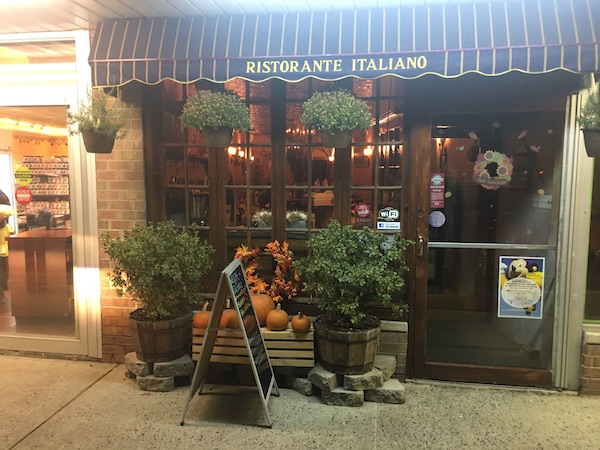
The simple long narrow dining room at Da Giorgio seats 47 guests. A gold toned tin ceiling, traditional sconces along the walls, a peaceful mural and several posters add interest to the room and most notable is the blackboard of daily specials, of which there are many.
At many restaurants that we visit, our purpose is simply to eat. 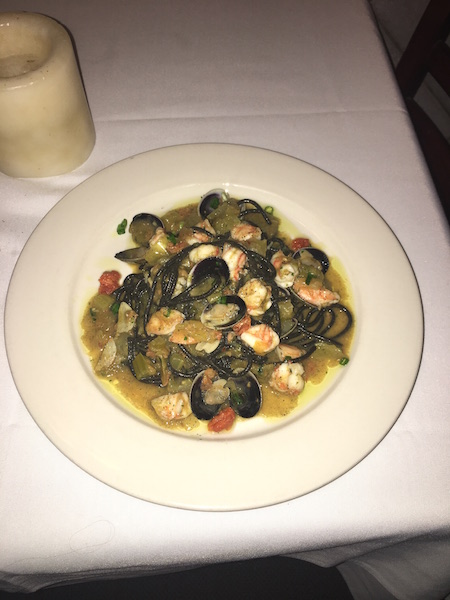 At Da Giorgio you go to dine. A meal here is truly a leisurely adventure in good taste. The menu includes many traditional as well as creative dishes. Several of the classics such as stuffed meatball Calabrese, as an appetizer are based on family recipes. Here, the meatball of beef, veal and pork is enhanced with a filling of house made mozzarella. The Lasagna Calabrese is layered with mini meatballs, caciocavalo cheese and thin slices of prosciutto. I arrived at Da Giorgio with expectations of sampling many menu items, perhaps stuffed meatball, baked clams, eggplant rollatini, mussels bianco or crudu del Giorno , sashimi style sliced fish in a lemon and oil dressing. I remembered a unique calamari pocco pazzo salad (a little crazy) with arugula, fried calamari, sliced banana, tomato and avocado in a ginger lime vinaigrette, and an outstanding beet salad with asparagus, organic greens ricotta salata in a port wine reduction I might have sampled some wild mushroom or sausage and pea risotto. My pasta choice would have probably been one I remember so well, Rigatoni Giorgio with zucchini and steak tips in a brandy sauce or maybe cavatelli con vongole with baby clams, cannellini beans, grape tomatoes and garlic and olive oil. Salmon with pesto, branzino oreganato, bisteca alla fiorentina, or chicken or veal in several preparations might be my entrée.
At Da Giorgio you go to dine. A meal here is truly a leisurely adventure in good taste. The menu includes many traditional as well as creative dishes. Several of the classics such as stuffed meatball Calabrese, as an appetizer are based on family recipes. Here, the meatball of beef, veal and pork is enhanced with a filling of house made mozzarella. The Lasagna Calabrese is layered with mini meatballs, caciocavalo cheese and thin slices of prosciutto. I arrived at Da Giorgio with expectations of sampling many menu items, perhaps stuffed meatball, baked clams, eggplant rollatini, mussels bianco or crudu del Giorno , sashimi style sliced fish in a lemon and oil dressing. I remembered a unique calamari pocco pazzo salad (a little crazy) with arugula, fried calamari, sliced banana, tomato and avocado in a ginger lime vinaigrette, and an outstanding beet salad with asparagus, organic greens ricotta salata in a port wine reduction I might have sampled some wild mushroom or sausage and pea risotto. My pasta choice would have probably been one I remember so well, Rigatoni Giorgio with zucchini and steak tips in a brandy sauce or maybe cavatelli con vongole with baby clams, cannellini beans, grape tomatoes and garlic and olive oil. Salmon with pesto, branzino oreganato, bisteca alla fiorentina, or chicken or veal in several preparations might be my entrée.
Chef Giorgio had other ideas for me. Since I had devoured so many of the menu items when they opened in 2007, I was treated to a tasting of the exciting specials that appeared on the day of my visit. A pail filled with freshly baked rolls and a dish of housemade caponata were set before me and soon, the parade of inventive dishes began. Many of us have sampled the popular buratta. Chef Giorgio's presentation was exquisite. Two large slices of this cheese, creamy in the center, were topped with crunchy caramelized grape tomatoes, crumbled pistachios and drizzled with a balsamic glaze. Carefully cubed pieces of beets and pistachios surrounded the dish. It is said that each section of the tongue reacts to a different taste. Here sweet, tart, and salty all interacted for a truly great beginning. Next to arrive was a fresh fig, wrapped in speck and buffalo mozzarella. A glaze of balsamic completed the topping. Sitting beside it was a salad of fennel, granny smith apples, pomegranate, watercress and candied nuts. It was autumn on a plate, a beautiful still life. An unusual pasta special followed. The spachtelli, a squid ink infused black pasta, tossed with a garlic butter sauce, thin slices of jalapeno and succulent crabmeat was sprinkled with parmesan bread crumbs. The touch of jalapeno added a bit of kick to the dish without overwhelming it. The breadcrumbs added texture to complete this beautifully conceived pasta dish. Our entrée special was indeed special. Porto Piano started with scaloppine of chicken breast. Thinly sliced, it was layered with mozzarella and prosciutto and for Giorgio's creative finale, a large tempura battered squash blossom topped the dish. A sauce of roasted garlic, lemon and white wine surrounded this flavorful creation. For dessert, I was presented with a parfait glass with a scoop of hazelnut gelato. Hot espresso was poured over it and it was embellished with freshly whipped cream. Refreshingly simple, this rendition of affogato was just sweet enough to complete a perfectly orchestrated meal.
Soft music and a friendly staff added to the pleasure of the dining experience. Enthusiasm still permeates Chef Giorgio's personality. His eyes light up as he describes his creations and mine lit up upon tasting his glorious dishes. With a mind exploding with culinary ideas, I cannot imagine what he would create given a selection of unique assorted items with which to prepare a dish. I can only assume the results would be extraordinary.
Enjoy a leisurely lunch or dinner at Da Giorgio's, where creativity abounds.
Da Giorgio Ristorante
77 Quaker Ridge Road
New Rochelle
(914) 235- 2727
Recipes:
Squid Ink Pasta with Shrimp, Ndujetta and Tomatoes (serves 2-3)
Ingredients:
1 pound large shrimp, peeled and deveined and chopped into ¼ inch pieces
3 Tbsps. extra virgin olive oil
5 cloves garlic, thinly sliced
1 bay leaf
1 cup crushed or whole peeled pureed tomatoes
4 ounces ndujetta*
Kosher salt to taste
12 ounces squid ink spaghetti
¼ cup freshly chopped parsley
Finely ground Calabrese chili flakes, to taste*
½ cup dry white wine {if you would not drink it don't cook with it]
Directions:
Heat 1 Tbsp. of oil in a large saucepan over medium high heat and saute garlic until golden, stirring constantly. Add wine and reduce by half. Add tomatoes and bay leaf and cook on medium high heat for 4 to 5 minutes. In a medium pot fill ¾ way up with water and kosher salt and bring to a boil. Add pasta and cook to al dente. In the meantime add shrimp and ndujetta to the tomatoes Cover the pot and heat through to cook the shrimp. Drain the pasta and reserve about 1 ½ cups of the water. Add cooked pasta to tomato mixture adding the reserved pasta water as needed for a desirable consistency. Toss in remaining oil and parsley and serve.
• The ndujetta is a soprasetta spicy paste available in Italian markets and Calabrese chile flakes are available there, as well
Marinated Mixed Olives Calabrese (Serves about 4)
½ cup each of red, green and black olives *
¼ cup extra virgin olive oil
4 Tbsps. chopped fresh oregano
Red chili flakes, to taste
Zest of ½ orange, lime and lemon
Drain all of the olives and rinse in water. In a non-reactive bowl toss with the remaining ingredients and let them marinate for a while.
• Teitel Brothers on Arthur Avenue has a good selection of olives
Contributor Judie Dweck has been writing about restaurants and food for many publications. She teaches creative cooking to children at Scarsdale elementary schools. Through the years, her articles have appeared in Jack and Jill Magazine, Spotlight, The Pleasure of Cooking and The Scarsdale Inquirer. She balances her restaurant tastings with daily ballet classes.
Positive Graffiti
- Details
- Written by: Joanne Wallenstein
- Hits: 5018
 Turns out, not all graffiti is bad. Perhaps in response to the anti-Semitic graffiti that was found along the Bronx River Parkway path last week, some chalkers with a better message got to work. Tod Cooperman who was biking on Saturday on that same path, on the section that parallels Garth Road, came upon some happier messaging.
Turns out, not all graffiti is bad. Perhaps in response to the anti-Semitic graffiti that was found along the Bronx River Parkway path last week, some chalkers with a better message got to work. Tod Cooperman who was biking on Saturday on that same path, on the section that parallels Garth Road, came upon some happier messaging.
Cooperman said, "I came across what I'd consider very positive graffiti. It was written with colorful chalk, unlike the racist graffiti that had been spray painted elsewhere. The messages (as shown here) read "BE KIND," "NEVER GIVE UP," "Let your Light SHINE," "SPREAD LOVE," and "Compliment Others; Build eachother Up." On the wooden bridge behind the Scarsdale train station it read "Love one Another."
Perhaps this is a good augur for the future, at least in Scarsdale.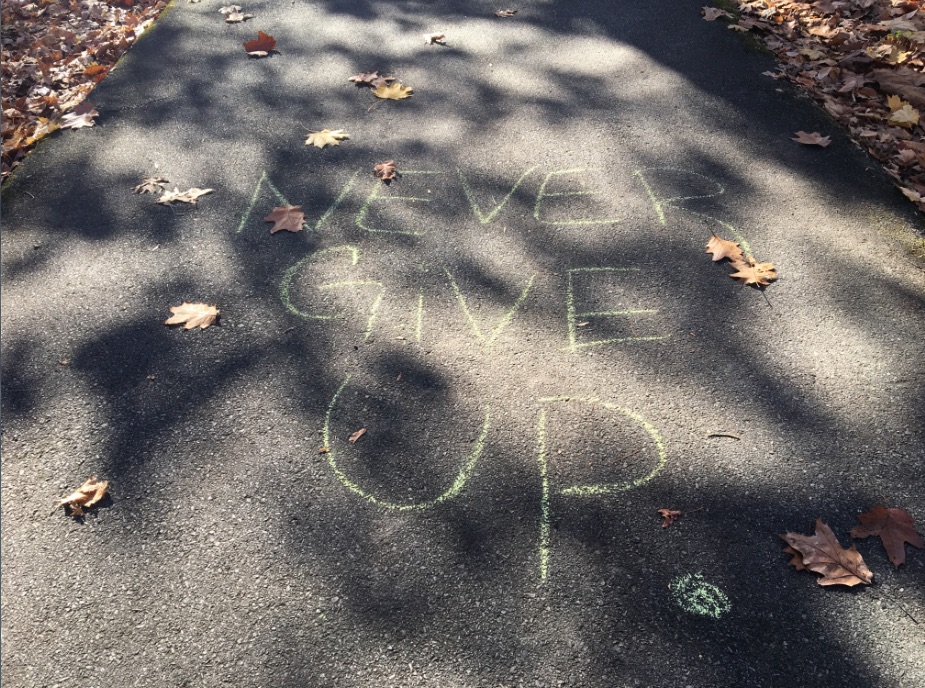
Anti-Semitic Graffiti Found on Bronx River Parkway Path
- Details
- Written by: Joanne Wallenstein
- Hits: 5458
 Westchester may already be experiencing the effects of the election of Donald Trump which has incited racial incidents all over the U.S. At 3 pm on Sunday 11/13, Westchester County Police received a report that the footpath and a bridge along the Bronx River Parkway bike path were defaced with spray-painted scrawling, which included a swastika, the initials, KKK, and various racial slurs. See photos here.
Westchester may already be experiencing the effects of the election of Donald Trump which has incited racial incidents all over the U.S. At 3 pm on Sunday 11/13, Westchester County Police received a report that the footpath and a bridge along the Bronx River Parkway bike path were defaced with spray-painted scrawling, which included a swastika, the initials, KKK, and various racial slurs. See photos here.
A crew from the county is currently removing all of the graffiti and a police investigation is underway. County Executive Rob Astorino has asked for additional resources and surveillance in all public areas owned by the county, including more inspections of county trail ways and bike paths.
Commenting on the incident, Astorino said, "Bigotry in any of its forms will not be tolerated in Westchester. I want everyone to know county government will remain vigilant in its efforts to ensure that the rights, dignity and safety of all our people are protected every day. This type of activity is criminal and will be prosecuted." He was joined by James Castro-Blanco, the executive director of the Westchester County Human Rights Commission, and George Longworth, commissioner of the Westchester County Police, at a press conference at the scene of the vandalism just south of the White Plains Metro North train station.
North train station.
Astorino encouraged anyone who feels they have been the victim of discrimination to contact the county's Human Rights Commission at (914) 995-7710 or visit the website here.
Craft Sandwich Creations at Mason Sandwich Co.
- Details
- Written by: Judie Dweck
- Hits: 9944
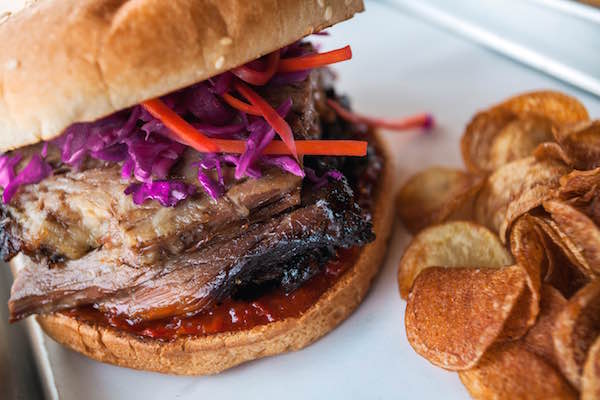
The atmosphere at this compact space is welcoming and very informal. Black and white tile floors, a large picnic table and benches, several tables along the side wall, stools at the counter and at the front window supply the seating. The Brindley brothers can be found preparing their delights at the open kitchen towards the back. Above the counter is the daily blackboard menu, announcing the soups, salads, beverages, and special of the day. The staff is friendly and efficient.
My recent visit was late in October and the festive 
There were about two dozen sandwich choices, one more interesting than the next. We loved the shrimp po' boy, a true taste of New Orleans. Served on a large baguette, the large shrimp were nicely seasoned and layered with lettuce and tomato. A delicious Old Bay remoulade sauce topped this sandwich. Crispy cod was our next treat. Served on a bun, the beer battered dipped fish perfectly cooked, nice and crisp on the outside and moist within. Red cabbage slaw was a fine accompaniment. On a future visit I probably would request the tartar sauce on the side, rather than on top of the sandwich to get the true flavor of the wonderful crisp cod. The beet city sandwich was a vegetarian delight. The paper thin slices of agrodolce fresh beets were layered with arugula, fried goat cheese and hazelnut gremolata. This was a beautiful and very tasty combination of textures and flavors. Potato rolls, sesame buns, baguettes, country white and multigrain breads are appropriately combined for each sandwich. Nothing is boring here. I can't wait to try the very popular chickwich with buttermilk fried chicken, spicy maple syrup and homemade dill and bread and butter pickles, as well as the 53 rd and fifth, New York City style cart chicken with yogurt sauce and harissa, and El Cubano for a taste of Cuba. Even BLT, grilled cheese and Mason Burgers have creative touches at Mason Sandwich Co.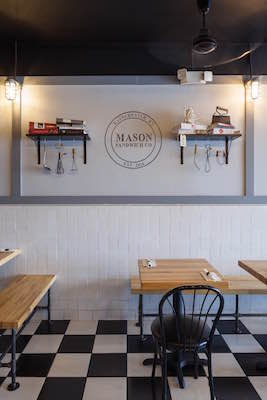
From the salad selections, I sampled a superb beet salad. An abundant serving of chunks of fresh agrodolce beets combined with arugula, goat cheese and hazelnuts and was most satisfying. Also offered are Caesar, arugula and quinoa salads. The blackboard menu offers several "plates". I felt very healthy with a bowl of ancient grains to offset my fried cod. The combination of quinoa, freekuh, roasted cauliflower, chick peas, spinach and pomegranate tossed with a curry vinaigrette was the perfect combination of grains and vegetables.
To complete your meal, try one of their creative milkshakes with interesting flavors such as Nutella, oreo, butterfinger, strawberry shortcake, fig or apple cider. Craft soda from Harmony Springs is available, as well and beers will probably have arrived by the time you are reading this article.
Enjoy the crafty creations at the fun filled friendly Mason Sandwich Co.
Mason Sandwich Co.
33 Mill Road
Eastchester NY
(914) 776 2766
http://masonsandwiches.com
Open Tuesday through Sunday from 11 AM to 8 PM
Recipe: Quinoa Salad with Lemon Vinaigrette (Serves 2-4)
For the salad
4 cups cooked quinoa (follow package directions for cooking this grain)
1 English cucumber, peeled and diced
1 cup garbanzo beans (chick peas)
1 cup cherry tomatoes
1 red onion, in julienne
1 cup feta cheese, crumbled or in small chunks
Place all ingredients in a non reactive bowl. Set aside and prepare the dressing.
For the dressing
1 cup olive oil
¼ cup freshly squeezed lemon juice
2 Tbsps. honey
Any extra dressing can be refrigerated.
